Japanesque: The Japanese Print in the Era of Impressionism
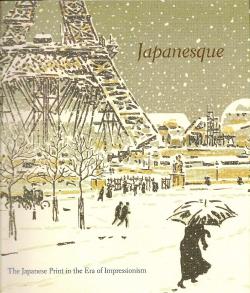
By Karin Breuer, Fine Arts Museum of San Francisco, Del Monico Books-Prestel, 2010, 156 pages including catalogue and index, copiously illustrated in colour, US $34.95
This book is much more than a catalogue (see note 1). Karin Breuer outlines firstly the origins and development of the Japanese prints. The author then describes the aesthetics of ukiyo-e. This is followed by a discussion of “European Artists and Japonisme.” The last chapter is devoted to “the Japanese style in American Printmaking.”
The contents of the first chapter will be familiar to anyone who has some knowledge of the history of Japanese prints and most of the prints reproduced are well known, but it provides a useful summary for someone new to the subject.
In the second chapter the author outlines some of the distinctive features of composition in Japanese prints such as “the division of the composition into sections or simple geometric areas.” The author notes that “the uplifting of the background and the strong use of diagonals are evident in many early prints.” Of landscape prints it is noted that “In keeping with the Japanese love of decoration and pattern, they were often composed as interlocking areas of land and sea.” “Another favourite device was the bird’s eye perspective…often combined with a high horizon line.” The way in which Japanese artists made effective use of silhouettes is also emphasized. Among the prints reproduced in this section the following prints by Hiroshige of a festival at the Great Shrine at Izumo and by Hokuei of the actor Arashi Rikan II seemed to me particularly striking.
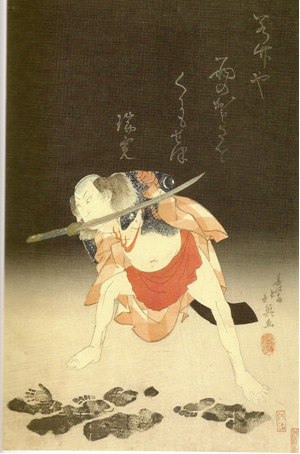
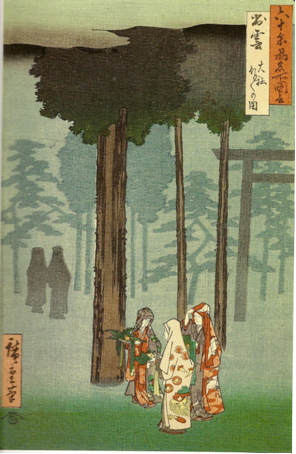
Breuer in commenting on the Japanese use of patterns in ukiyo-e includes a reproduction of the following print by Kuniyoshi Utagawa [歌川 国芳] of a woman standing on a veranda wearing “an extravagant black kimono.”
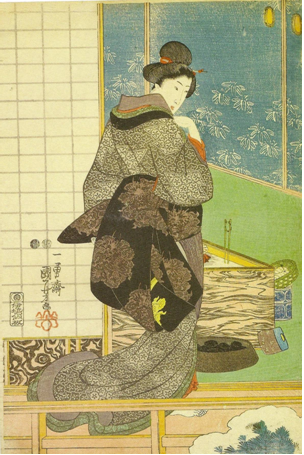
Anyone familiar with the history of Japonisme will be familiar with the influence which Japanese prints had on artists such as Whistler, Van Gogh, Manet, Monet, Degas and Toulouse Lautrec. This lithograph of 1899 by Toulouse Lautrec is justifiably famous.
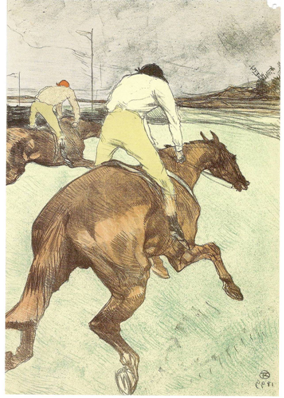
Another artist much influenced by Japanese prints was Mary Cassatt whose woman bathing, a famous colour aquatint, was thought to be greatly influenced by Utamaro [喜多川 歌麿].
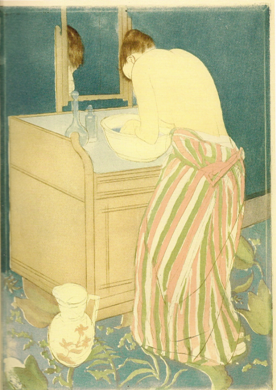
I was not familiar with Henri Rivière’s lithograph series entitled Thirty-six views of the Eiffel Tower featured on the cover of the book. Here is a reproduction of another in this series showing the river Seine:
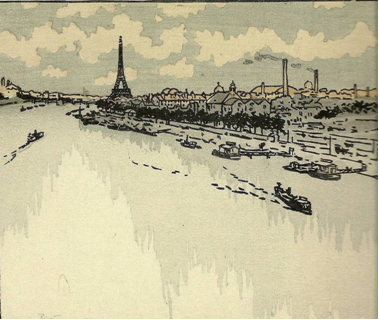
 In the chapter devoted to the Japanese style in American Print making the author gives pride of place to this 1906 print entitled The Wave, Moonrise by B.J.O.Nordfeldt which was so clearly influenced by Hokusai’s wave.
In the chapter devoted to the Japanese style in American Print making the author gives pride of place to this 1906 print entitled The Wave, Moonrise by B.J.O.Nordfeldt which was so clearly influenced by Hokusai’s wave.
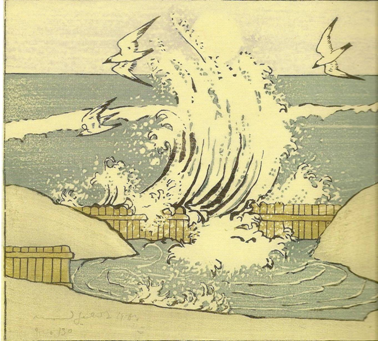
This woodcut by Alice Smith entitled Moonflower and Hawksmoth is obviously inspired by Japanese flower painting.
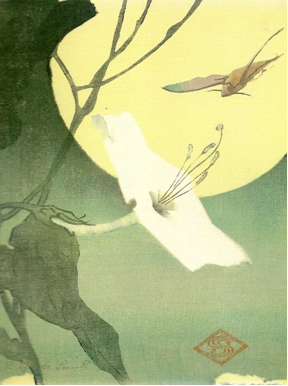
Frank Morley Fletcher who came to California from England in 1923 had been captivated by Japanese prints when he was a student in Paris in the later 1880s, the height of Japonisme. Breuer includes a reproduction of a 1900 print of Brotherswater in the Lake District which has elements clearly inspired by Japanese prints but so does the following 1932 woodcut Mount Shasta in California.
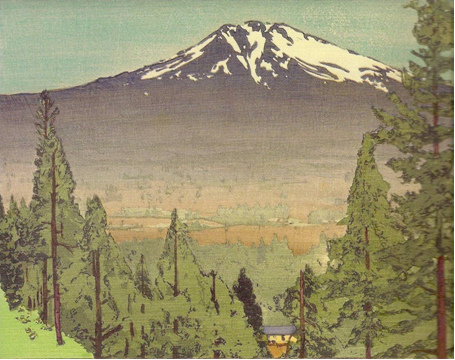
This is a book which anyone interested in Japanese prints and their influence on western art will want to have. It can be found on the internet at under £15 making it a good buy.
Note 1
Published on the occasion of the exhibition with the same as the book title and organised by the author at the Legion of Honor Gallery in San Francisco, October 16, 2010-January 9, 2011.

